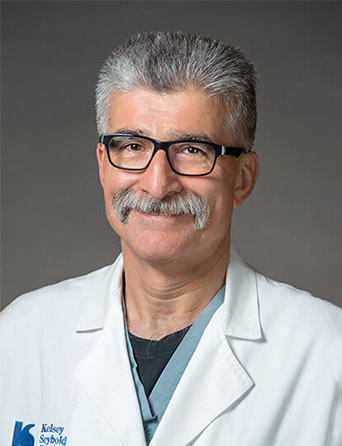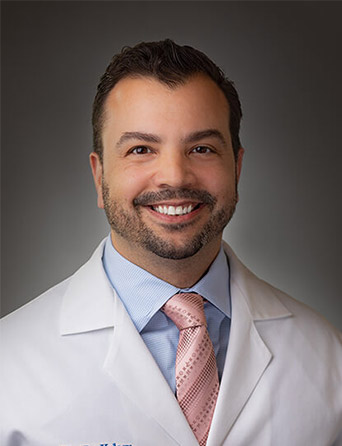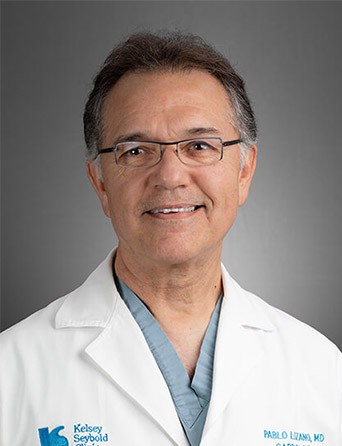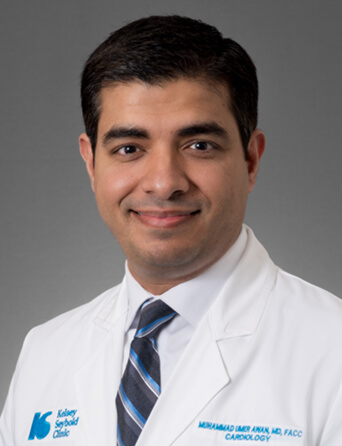Join Our eNewsletter!
Subscribe to our monthly newsletter to receive encouraging advice to help you lead a healthy lifestyle.

Treating Blockages in Arteries
What do minimally invasive procedures mean for patients with heart disease? Some of the benefits can include faster recovery, as well as less pain, lower blood loss and less risk of infection.
There are approximately 27 million people in the United States with documented heart disease.
The heart has its own blood vessels (called: “coronary arteries”) that deliver blood directly to the muscle fibers of the heart allowing it to remain healthy and preserving its pumping function.
Blockages in these arteries can occur over time as the buildup of cholesterol and other particles accumulate in the vessel walls. Other risk factors for disease in the coronary arteries include:
- High blood pressure
- High cholesterol
- Diabetes
- Tobacco use
- Family history of heart disease
As vessels narrow, the heart itself begins to get less and less blood which can lead to heart failure. Commonly, people who have blockages experience what we call angina, which is a chest pain that occurs with activity and is relieved with rest.
In more serious cases, a vessel can suddenly become closed off. This is what we call a heart attack or myocardial infarction, and is considered a medical emergency because a small amount of heart muscle is suddenly starved of blood and begins to die.
In many patients, there are significant advantages to early discovery of blocked arteries and subsequently treating these vessels (revascularization) if needed. Advantages of revascularization can include:
- Prolonged survival
- Less chest pain and shortness of breath
- Less heart failure by preserving muscle that might be at risk
Testing for Heart Disease
Non-invasive testing methods Cardiology specialists use to identify coronary artery disease are called “stress tests”. These tests are done by using a standard treadmill or a drug given through an IV (pharmacological stress).
For any test, a nuclear imaging component can be added to help cardiologists determine which part of the heart may be suffering from decreased blood flow. These tests are routinely done in an outpatient setting and typically only take a couple of hours.
Should the stress test reveal a possible blocked artery, there are many minimally invasive tools and techniques cardiologists can utilize to treat the vessel.Many of these procedures allow patients to only stay one night in the hospital, allowing them to get back on their feet and on with their lives much faster.
Angioplasty and Stents
After a stress test has determined that a patient has a possible blocked artery, the next step is often to perform an angiogram. This procedure is performed in the hospital through a very small (1.6mm) tube inserted through a blood vessel near the hip or thigh. If, after performing the angiogram, a blocked artery is revealed that needs to be opened, a cardiologist has many non-surgical options to present the patient.
Angioplasty is a nonsurgical technique for opening a blocked artery using a balloon catheter. This procedure is performed similarly to the angiogram, only instead of just taking a pictures, a cardiologist is able to cross the blocked vessel with a small wire, and place a balloon over the tight area. Often, several balloon inflations are needed to open a blockage in a coronary artery narrowed by a buildup of plaque. This procedure is designed to improve blood flow to the heart.
Many times the vessel needs extra support to stay open. In these cases, a small wire mesh tube called a stent may be permanently placed in the newly opened artery during the procedure to help the vessel to remain open.
Typically, angioplasty with or without stent placement has a short recovery time, doesn’t require a large incision and has fewer risks than surgical options.
Heart Bypass Surgery: When is it Necessary?
Not every blockage can be treated with angioplasty or stents. Some patients who have blockages may still need coronary bypass surgery (heart surgery).
Heart bypass surgery creates a new route, or a bypass, to allow blood to reach the heart. In some experienced heart centers, if the patient qualifies, bypass surgery can be performed via minimally invasive techniques and can sometimes even be done without stopping the heart and putting the patient on a heart-lung machine.
In these cases, a heart surgeon can make a 3- to 5-inch-long incision in the left part of the chest between the ribs instead of splitting open the front part of the chest (sternum). These newer techniques can be associated with a shorter stay in the hospital and quicker recovery times.








